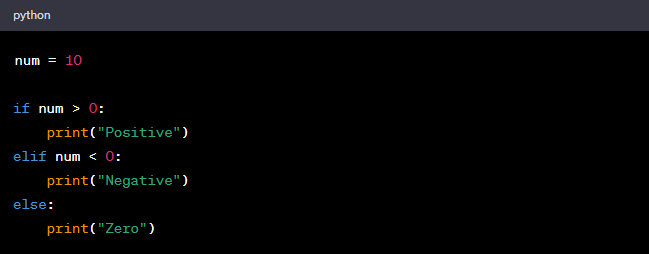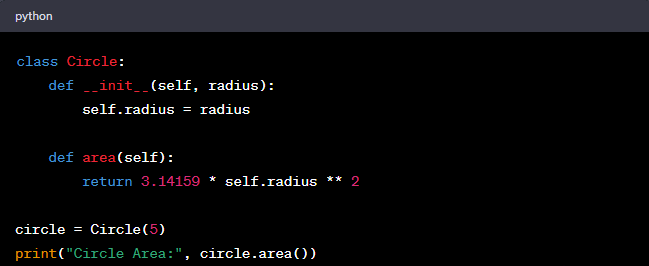In the dynamic and ever-evolving landscape of programming languages, Python is a versatile and elegant tool that has captivated newcomers and seasoned developers. With its clean syntax and wide-ranging capabilities, Python has transcended the boundaries of traditional programming to become a language of choice for applications spanning web development, data analysis, artificial intelligence, and more. Whether you’re taking your initial strides into the coding world or looking to expand your programming prowess, this article is poised to be your comprehensive guide, illuminating the nuances, key concepts, and profound functionalities that underscore Python programming.
The Python Prelude
Python’s genesis can be traced back to the late 1980s when Guido van Rossum, a Dutch programmer, set out to develop a language that prioritized readability, extensibility, and elegance. Named after the British comedy troupe Monty Python, Python was officially introduced in 1991 with its philosophy of emphasizing code aesthetics and fostering a strong community spirit.
Getting Started
Diving into Python programming necessitates establishing your coding haven. Python’s cross-platform compatibility ensures that it operates seamlessly across Windows, macOS, and Linux systems. Begin by downloading the latest Python version from the official website (python.org) and follow the installation instructions tailored to your operating system. Once installed, you can harness the Python interpreter either through the command line or via an integrated development environment (IDE) such as PyCharm or Visual Studio Code.
Mastering the Basics of Python Syntax
Python’s hallmark lies in its minimalist and legible syntax, which is both intuitive and expressive. Beyond its surface simplicity, Python employs indentation as a crucial component of its syntax. This whitespace-driven indentation enforces structured code and eliminates the need for excessive punctuation. For instance:

The indentation signifies the scope of code blocks, promoting readability and reducing ambiguity.
Data Structures and Variables in Python
Python’s versatility in accommodating various data types—integers, floats, strings, lists, tuples, sets, and dictionaries—fuels its prowess. Python’s dynamism shines in its dynamic typing, relieving programmers from the need to explicitly specify data types. For example:

This inherent flexibility accelerates coding and beckons both novices and experts to explore its potential.
Control Flow
Steering the trajectory of code execution is facilitated by control flow structures such as if-else statements, loops, and switch cases. Python simplifies this process by offering streamlined control flow mechanisms, fostering the creation of concise and expressive scripts. For example:

Functions and Modularization
Python’s modularity ethos shines through its function-oriented approach, allowing developers to fragment code into reusable functions. Employing the def keyword, Python’s functions can accept arguments and return values. This modularity bolsters code organization and promotes the reuse of well-defined components. Consider this illustration:

Python Programming
Python deftly supports both procedural and object-oriented programming (OOP) paradigms, enabling developers to construct classes and objects, facilitating structured and scalable code design. Classes encapsulate data and behaviors, lending to enhanced code reusability and maintenance. A simple class example:

Handling Exceptions Gracefully
Python programming places great emphasis on graceful error handling. Python adeptly manages exceptions, which disrupt the normal code flow. The try and except blocks facilitate the graceful capture and management of exceptions:

Python Libraries and Their Wonders
Python’s supremacy partially resides in its wealth of libraries and frameworks. These repositories house pre-built modules and functions that expedite development. For example, numpy expedites array operations, while matplotlib empowers the creation of stunning visualizations.
The Pythonic Way
Pythonic best practices underpin not only functional code but also readable and maintainable code. Recommendations span using list comprehensions, employing descriptive variable names, and leveraging built-in functions. Adhering to these practices nurtures a consistent and graceful coding style harmonizing with the Python community’s norms.
Conclusion
Python programming transcends writing mere code – it’s a platform for expressing creativity, solving intricate problems, and shaping solutions. With its user-centric syntax, expansive library ecosystem, and potent capabilities, Python acts as a canvas for developers to materialize their visions. Regardless of expertise, Python beckons you to voyage, to experiment, and to stretch the boundaries of possibility.
As you traverse the landscape of Python programming, bear in mind that each line you write is a brushstroke on the canvas of innovation. Embrace its simplicity, wield its potency, and let your imagination cascade – for Python is not just a language; it’s a gateway to a universe of unbounded possibilities.
